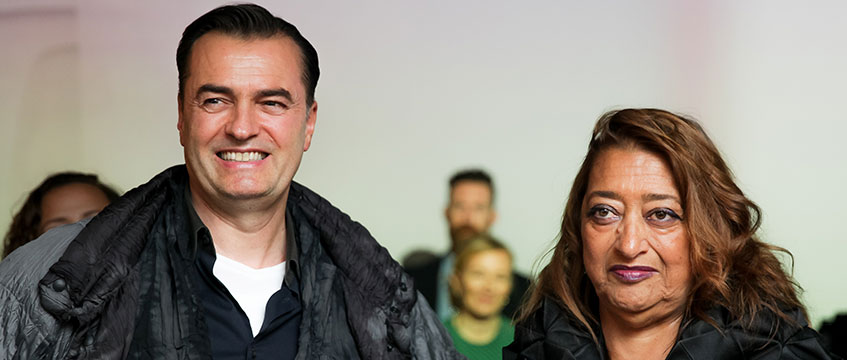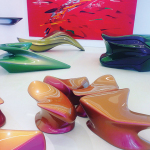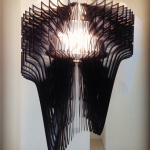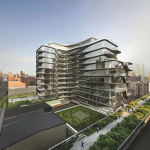For three decades, Patrik Schumacher was right-hand man to legendary architect Zaha Hadid, until her death earlier this year. He talks to Emily Wright about the daunting task of continuing Hadid’s practice without her.
“For me, our connection was instant. But I am quite sure it was not for Zaha.” Patrik Schumacher pauses, and takes a deep breath. A rare show of emotion.
“When we first met, I felt like she would rather speak to anyone but me. But, by the time she died, not a single day had passed in 30 years when we didn’t talk. That’s what I will miss the most: the endless conversation. We spoke for hours about design, ideas, the critics. You know, she really suffered over all the criticism. We also talked a lot about feeling misunderstood… and, by the way, I am just as misunderstood as she was.”
Now the 54-year-old partner of Zaha Hadid Architects has the perfect opportunity to set the record straight. Albeit one that has come at a huge price – both to him personally and the world at large.
I was, and still am, extremely robust when absorbing criticism. And Zaha was generous with her criticism
This is the man who has been left with no choice but to step into the biggest and most stylish shoes in modern design. He is the man who must “pick up the threads” of ZHA following the sudden death of its legendary founder, the Iraqi architect Zaha Hadid, in March this year at the age of 65. He also happens to be the man who was her closest confidant. For over three decades Schumacher stood loyally by Hadid’s side, took her criticism, and was one of the few people who was not afraid to give as good as he got. “I gave a lot of push back,” he says with a wry smile. “Nobody else did that. And she respected it. Though I still don’t fully understand why.”
Whatever the reason, it is clear that Hadid had great faith in the man who has become her successor. But that does not make Schumacher’s role any easier. He must now navigate a fine line between grieving his friend and taking over a world-famous company – minus its namesake. “There is a lot of pressure,” he concedes. “And my head started working right away as to how we would continue.”
The practice set out its stall early in terms of what would happen after Hadid’s death. By April, it had confirmed that ZHA would continue to operate and under the same name. But now fresh questions are arising: how successful will the firm be when it starts work on new schemes with no input from Hadid? Will her distinctive style remain? And – a tough one for Schumacher, given his relationship with Hadid – will the firm now be better placed to win work in London, where developers famously shied away from working with Hadid because of her “difficult” personality?
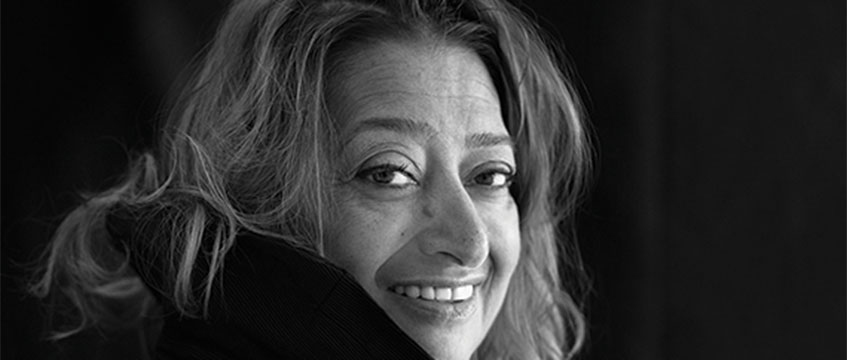
Enduring partnership
Before considering the future of ZHA, what about Schumacher’s own journey? Certainly, his memories of his friendship with Hadid – whom he was with when she died – paint a rare, revealing picture of the strength of this architectural power duo. Their partnership was too often glossed over, in favour of a focus on the woman who, in her own words, “gave men hell”.
“She was very shy when I first met her,” says Schumacher. But while he joined the practice in 1988, he knew of her already, having studied her work and theories at the University of Stuttgart.
“She was also so driven. After a few weeks of silent encounters – she never spoke to me, as I said before – we started to work together on a competition.”
And that was that. The pair became firm friends, although Schumacher is unsure quite how he managed it.
“What was it about me?” he asks, laughing. “How did I succeed with her where so many didn’t? I am not sure there is a secret but I had a very, very thick skin. I was, and still am, extremely robust when absorbing criticism. And Zaha was generous with her criticism – in the final analysis, never in the heat of the moment. I think it would be fair to say that, ultimately, I was unfazed by her.”
So does he think a thick skin was a necessity for anyone hoping to have a workable relationship with Hadid?
We would speak for hours about design, ideas, the critics. She really suffered over all the criticism
“Yes, probably. But a lot of what people thought about her was not quite right. There were developers and clients that we heard, second-hand over the years, were worried about working with her. That she was too determined with her ideas. Maybe they were scared that they wouldn’t be able to control her.”
This was a particular problem in London, where ZHA tried and failed on numerous occasions to win projects.
“I think Zaha’s whole public persona and the way people saw her did prevent us from getting commercial work in London,” says Schumacher.
“We signalled interest and capability again and again. We had worked successfully abroad. We made the rounds several times and we did some studies for Canary Wharf Group and CapCo. But overall there was still a perception that her personality was too strong.”
This, of course, leads to questions about the practice’s future, in terms of London specifically. These questions are hard to ask a man who supported Hadid unwaveringly for so long. But does he think working in the UK capital will be easier now Hadid is no longer at the helm?
“I don’t know,” Schemacher says, clearly troubled. “It was all a perception of her – and one that anyone who really knew her will know was not right. But then, maybe my perceived more mellow and withdrawn personality will be more attractive to the London developers. People did find that big personality – and she was a celebrity, really – hard to control. We will see.”
He is quick to identify the city as a priority for the practice now, something he hopes the property sector at large will take into consideration. He mentions Battersea and Nine Elms as the sort of high-profile riverside spot that would benefit from an equally high-profile design style.
And does he have any fears over ZHA’s starchitect status? “As a practice, we are very flexible and resourceful. And it is not all one gear. We have a range of moods and modes, flamboyance and restraint. I would love for London’s developers to read this and understand a bit more about what we can offer and want to achieve. We have a great team full of many people who are understated and quiet.”
Quiet? The use of that word is telling. “Well, it is true,” he says. “The practice is full of so many different types of people, all so talented. It was never just Zaha.”
Being misunderstood
That may be true. But other issues have been raised that go beyond Hadid’s persona, perceived or otherwise, and are more related to the distinctive ZHA design style. About this Schumacher is equally, if not more, vocal in his defence.
“She was always so misunderstood by the world at large on this,” he says. “I try so hard to communicate the meaning of the formal explanations that Zaha had initiated as a great innovator…
“There was a misunderstanding of the purpose and potential of what she did. Her work was largely seen as an artistic project. But in her mind it was a project of life-enhancing design for the everyday. The pursuit of technical and social functionality, ideas about urban life. Ideas about how commercial and corporate buildings might function better.”
And this, he says, is why her distinctive designs go way beyond style over substance. In his mind they are very much both. “The use of curves makes it easier to keep track of complex trajectories through space and cluster volumes. If you do that with pure, straight geometries, you could quite quickly lose track, so these were the kind of themes we were trying to articulate.
“That depth of sociological pertinence was looked at as distracting from function. But function works via form, and if you go straight to the function, you are very restrictive. That’s the argument.”
For anyone who is not au fait with the most complex workings of architectural design – and, indeed, with Hadid’s exceptionally specific form – much of what Schumacher so passionately articulates could be lost in translation.
And this, he says, is why he – like Hadid – feels so misunderstood. “As I said, the endless conversation is what I miss the most.” Because he understood the way her mind worked to the point where they almost thought as one?
“I would say so,” he says. “And vice versa, too.”
A legacy to honour
On the subject of the future of ZHA more generally, Schumacher confirms that there will be no changes to the management structure and that he will just step up to take a leading role. “Zaha was a great hub of social activity,” he says. “I am not sure I can replicate that, but I am trying. Trying to pick up those threads.”
ZHA is on a global expansion drive. It just opened an office in New York to support its headline 520 West 28th Street project in Manhattan. It is also planning to open in Mexico City later this year, with hopes to move into other Latin American markets. Schumacher says the firm continues to thrive in the Middle East, with flagship schemes including the 2022 Qatar Olympic Stadium.
But that is a portfolio of projects in which Hadid was involved. Schumacher knows the real test will come further down the line.
“None of the clients we had just started working with have pulled away,” he says.
“But we have yet to see how things will continue with new work that won’t have any direct involvement from Zaha. For now, though, we feel strong. We have already been included in some new shortlists off the back of our reputation as a practice.
“And people are including me. They did before, and I was invited to many parties and events with Zaha. But I am still included now, which is comforting.”
This comment is possibly the most moving of the interview. Did he really fear he would no longer be accepted by the architectural world after Hadid’s death? “Well,” he says. “You never know.”
The message from Schumacher, loud and clear, is that ZHA is dedicated to continuing its work – and if the practice does not survive Hadid’s death then neither will Schumacher’s architectural career. “As long as I am an architect, I will work here,” he says. “Nowhere else. So if this doesn’t work, I will do something different.”
Hadid would likely be horrified by the very notion. But for now the ZHA strategy is focused on moving forward and honouring one of the great design legacies.
“The void is huge,” Schumacher says. “I can’t believe she is gone. I still don’t know why she respected me the way she did. I suspect it was because she sensed there was some genuine shared purpose and thought maybe it would be helpful to have someone critically pushing her.
“Not on the first day, of course. She would not have tolerated that.”
• To send feedback, email emily.wright@estatesgazette.com or tweet @EmilyW_9 or @estatesgazette







